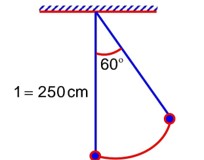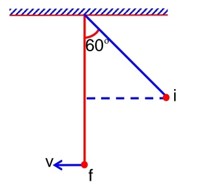Conservation of Mechanical Energy
Get insights from 5 questions on Conservation of Mechanical Energy, answered by students, alumni, and experts. You may also ask and answer any question you like about Conservation of Mechanical Energy
Follow Ask QuestionQuestions
Discussions
Active Users
Followers
New answer posted
a week agoContributor-Level 10
By conservation of mechanical energy
mg (1) = mv2 + mg (0.5)
v2 = 10
v = m/s
New answer posted
a month agoContributor-Level 10
(1/2)kx² = (1/2)mv² ⇒ x = v√ (m/k) = 10 * √ (4/100) = 10 * (2/10) = 2m
New answer posted
a month agoContributor-Level 10
Yes. Mechanical energy is the sum of both kinetic and potential energies. Kinetic energy cannot be a negative value since mass is always positive and velocity square leads to a positive value. However, potential energy can be negative depending on the reference point.
New answer posted
a month agoContributor-Level 10
Conservation of Mechanical Energy is linked to newton's second law of motion (F = ma) in combination with work energy theorem. The work energy theorem states that total work done on an object equals to change in kinetic energy. This theorem is used to prove that the sum of kinetic energy and potential energy remains constant.
Taking an Exam? Selecting a College?
Get authentic answers from experts, students and alumni that you won't find anywhere else
Sign Up on ShikshaOn Shiksha, get access to
- 65k Colleges
- 1.2k Exams
- 687k Reviews
- 1800k Answers



